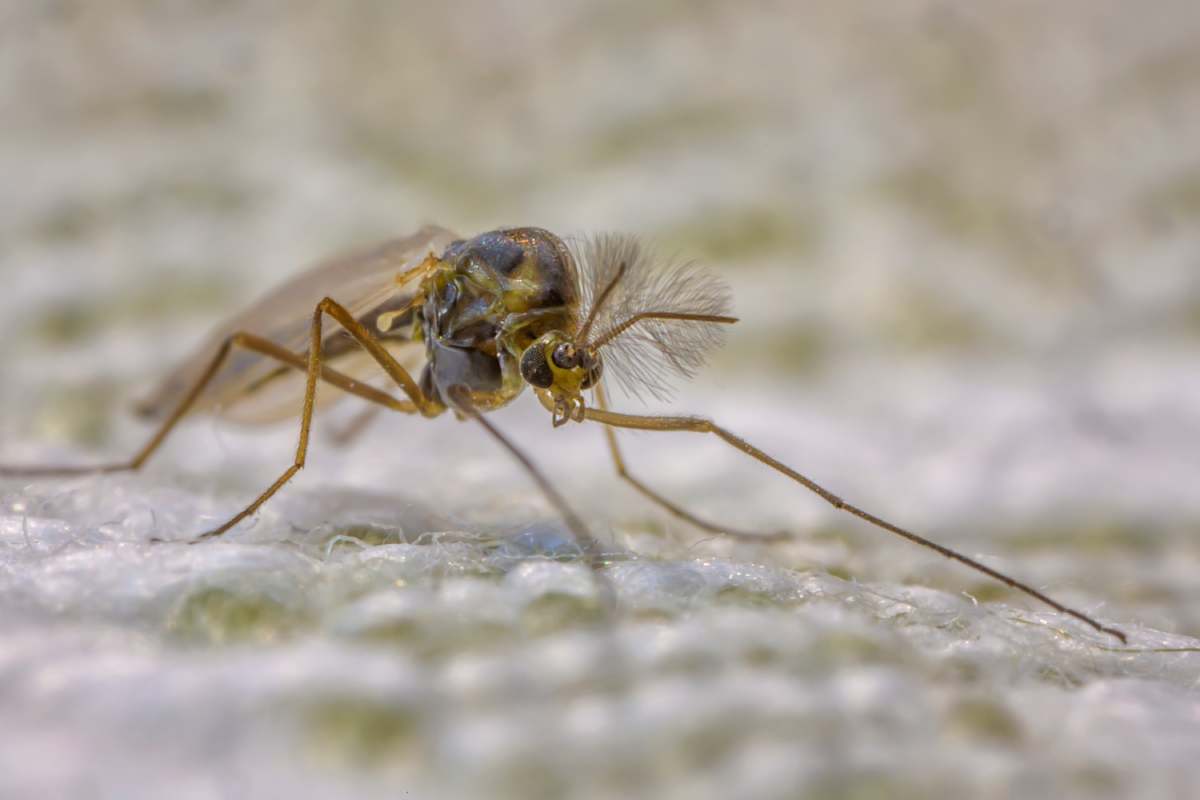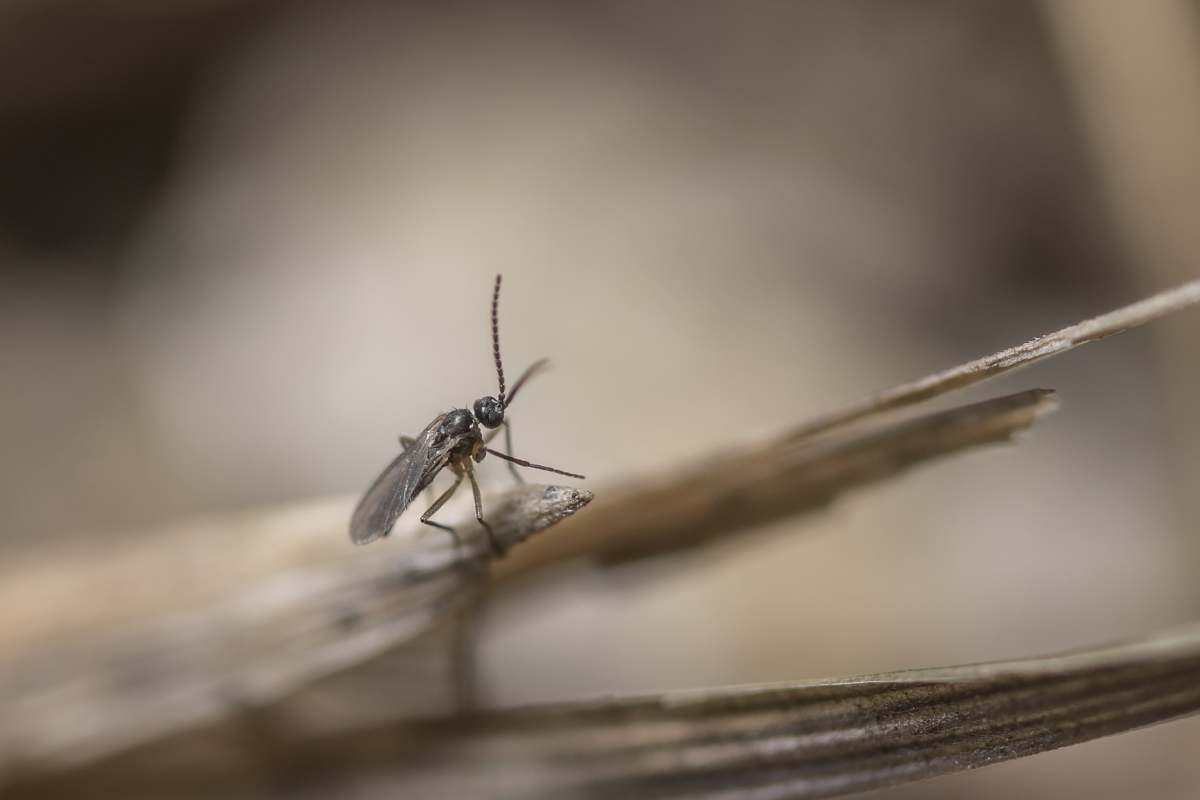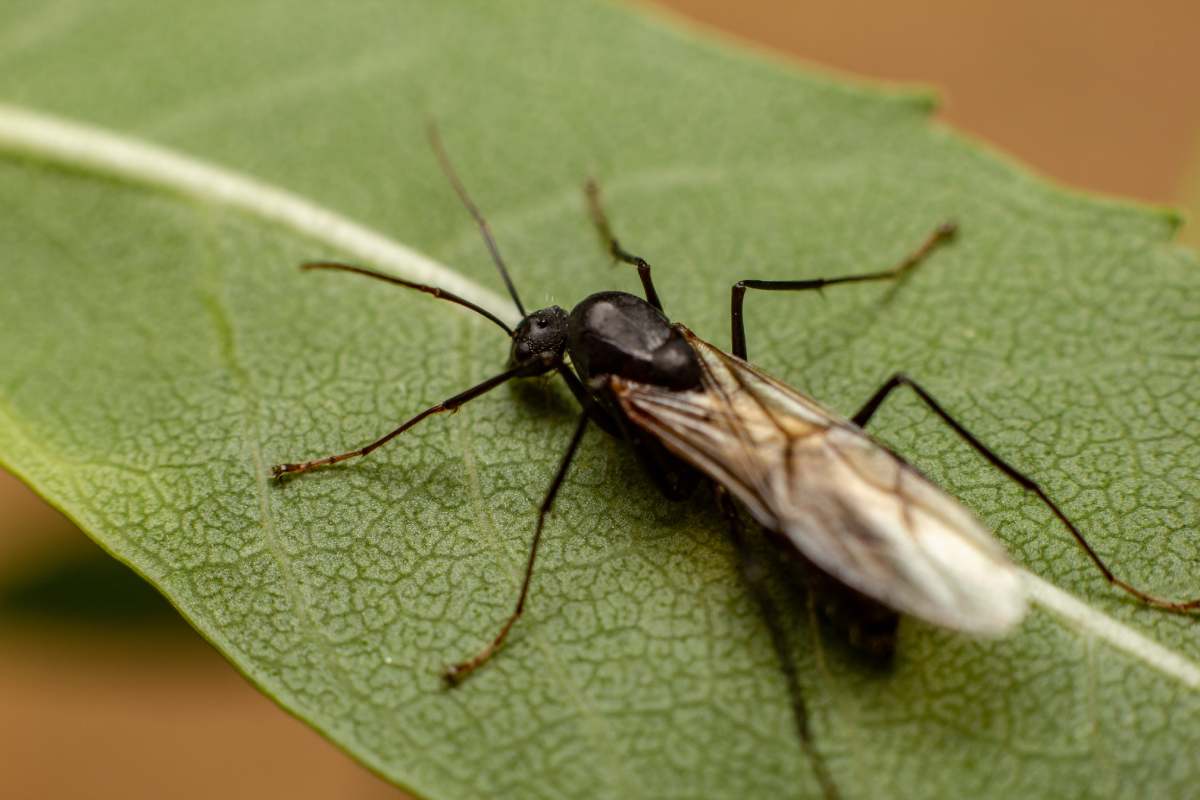What are gnats? What causes gnats in the house? Where are gnats usually found? How to get rid of gnats? Click here for more
Few things are as annoying as having gnats buzzing around the kitchen while you’re trying to cook. They seem to float in front of your face and land on your food, which can be really gross.
But don’t worry—you don’t have to put up with these pests. These tips and tricks will help you get rid of gnats and keep them away the next time they become a problem.
What Are Gnats?
Gnats are small, flying insects that belong to several different families within the order Diptera (the same order as flies and mosquitoes). They are often classified based on their appearance and behaviour.
Here are some common types of gnats:
- Fungus Gnats: These are small, dark, and delicate insects that are often found around damp soil or decomposing organic matter. They are common in homes with houseplants and are usually more of a nuisance than a serious pest.
- Fruit Flies: Often mistaken for gnats, fruit flies are attracted to overripe or rotting fruit and vegetables. They are small, with red eyes and a tan or brown body.
- No-See-Ums (Biting Midges): These tiny gnats are known for their painful bites. They are often found in outdoor areas, particularly near water or damp environments.
- Black Flies: Also known as buffalo gnats, these are small, dark, and are known for their irritating bites. They are often found near running water.
Gnats can be a nuisance due to their swarming behaviour and, in some cases, their bites. Managing gnats often involves addressing their breeding sites, such as removing standing water, keeping food sealed, and maintaining cleanliness.

What Causes Gnats in the House?
Gnats can invade your home for several reasons. Here are some common causes and how you can address them:
1. Overwatered Plants
Cause: Fungus gnats are often attracted to the damp soil of overwatered houseplants.
Solution: Allow the top inch of soil to dry out between waterings. You can also add a layer of sand on top of the soil to prevent gnats from laying eggs.
2. Food Waste
Cause: Fruit flies are attracted to overripe or rotting fruit, vegetables, and other food waste.
Solution: Store fruit and vegetables in the refrigerator or in sealed containers. Keep your kitchen clean and dispose of food waste promptly.
3. Unclean Drains
Cause: Fruit flies and drain flies can breed in the organic matter that accumulates in sink drains.
Solution: Clean your drains regularly with a mixture of baking soda and vinegar or a commercial drain cleaner. Keeping drains clean helps eliminate breeding grounds.
4. Trash Cans
Cause: Trash cans with food residue can attract gnats, especially if they are left open or not cleaned frequently.
Solution: Ensure trash cans have tight-fitting lids and are cleaned regularly. Empty the trash frequently to avoid buildup.
5. Pet Waste
Cause: Pet waste, if not cleaned up promptly, can attract gnats.
Solution: Clean up pet waste immediately and keep pet bedding clean.
6. Overripe or Rotting Produce
Cause: Both fruit flies and fungus gnats can be drawn to rotting fruit or vegetables.
Solution: Regularly check for overripe or rotting produce and discard it. Keep produce stored properly.
7. Poor Ventilation
Cause: Damp, poorly ventilated areas can create an ideal environment for gnats.
Solution: Ensure good ventilation in areas like bathrooms and basements. Use dehumidifiers if necessary to reduce moisture.
8. Indoor Compost Bins
Cause: Indoor compost bins can attract gnats if not properly managed.
Solution: Keep the compost bin covered and turn the compost regularly. Consider using a closed compost system designed for indoor use.

Where Are Gnats Usually Found?
Gnats are found in a variety of environments, and their presence often depends on the specific type of gnat and its preferred conditions. Here’s a breakdown of where different types of gnats are commonly found:
1. Fungus Gnats
- Where: Damp soil in potted plants, especially in homes and greenhouses.
- Environment: They thrive in moist environments where organic matter decomposes.
- Common Locations: Houseplants, outdoor potted plants, garden beds, and compost piles.
2. Fruit Flies
- Where: Overripe or rotting fruits and vegetables, as well as food waste.
- Environment: They are attracted to sweet, fermenting substances.
- Common Locations: Kitchens, fruit bowls, trash cans, and recycling bins.
3. No-See-Ums (Biting Midges)
- Where: Outdoor areas, especially near water sources.
- Environment: They prefer moist, humid environments.
- Common Locations: Beaches, marshes, swamps, and wooded areas. They can also be found in backyards during warm, humid weather.
4. Black Flies (Buffalo Gnats)
- Where: Near running water, such as streams and rivers.
- Environment: They breed in clean, fast-moving water.
- Common Locations: Riverbanks, stream edges, and lakeshores.
5. Drain Flies
- Where: Dirty or clogged drains.
- Environment: They breed in the organic matter that accumulates in drains.
- Common Locations: Kitchen sinks, bathroom sinks, and shower drains.
6. Biting Gnats
- Where: Outdoor environments, particularly in wooded or marshy areas.
- Environment: They are often found in areas with high humidity and standing water.
- Common Locations: Forests, wetlands, and areas with dense vegetation.
7. Indoor Compost Bins
- Where: In compost bins that contain food scraps and organic matter.
- Environment: They thrive in the moist, organic environment of compost.
- Common Locations: Indoor compost bins, especially if not well-managed.
8. Rotting Wood or Leaves
- Where: Decomposing organic material.
- Environment: Moist, decaying plant matter is a breeding ground.
- Common Locations: Gardens, forests, and yards with piles of leaves or wood.
Signs of a Gnat Infestation
The main sign of a gnat infestation is seeing several gnats flying around when you turn on the sink, move a houseplant, or disturb old fruit. Gnats don’t damage wood or leave droppings, so if you notice these flying pests, it’s a good indication you have an infestation.

How to Get Rid of Gnats
There are many ways to get rid of gnats, but here are some of the most effective methods:
1. Use a Bug Zapper
A bug zapper can be very effective for controlling gnats. These devices attract gnats with light and then kill them with an electric shock. Modern bug zappers are safe for indoor use and can quickly help with a gnat problem.
There are also fan-powered devices that trap and dehydrate gnats without using electricity. However, both types of devices might also catch beneficial insects like honeybees and other pollinators.
2. Vinegar Traps
Vinegar traps are great for catching fruit flies. Here are two methods:
- Bowl Trap: Pour apple cider vinegar, a teaspoon of sugar, and a teaspoon of dish soap into a bowl. The sugar attracts the gnats, the soap prevents them from escaping, and the vinegar kills them.
- Plastic Wrap Trap: Mix apple cider vinegar and sugar in a bowl, cover it with plastic wrap, and poke small holes in the top. Gnats will be attracted to the mixture and get trapped inside.
3. Wine Traps
Wine traps can also catch fruit flies. Use old wine with natural sugars to attract them:
- Bowl Method: Pour wine into a bowl and cover it with plastic wrap. Poke small holes in the wrap to let gnats in but not out.
- Open Bottle: Leave an open bottle of old wine on the counter to attract and trap the gnats.
For extra effectiveness, add a teaspoon of dish soap to the wine.
4. Candle Traps
Candle traps are a quick way to kill gnats, though they can be a bit dangerous.
- Setup: Fill a pan with about ¼ inch of water and a teaspoon of dish soap. Place a candle in a holder and put it in the pan. Light the candle and turn off all the lights. Gnats will be attracted to the flame and either fly into it or fall into the soapy water.
5. Drain Cleaner
To eliminate drain flies, use a drain cleaner:
- How To: Follow the instructions on the drain cleaner to pour it slowly down the drain. This will kill both the gnats and their larvae. Wear a mask, gloves, and eye protection, as drain cleaner can be hazardous.
6. Bleach Drains
Another way to tackle drain flies is with bleach:
- How To: Pour a cup of bleach down the drain slowly, following the directions on the bleach container. This will kill gnats and larvae. Make sure no other chemicals are in the drain to avoid harmful fumes.
7. Reduce Watering
If you have fungus gnats in your houseplants, try cutting back on watering:
- How To: Allow the top inch of the soil to dry out between waterings. This will help kill the gnat larvae living in the soil.
8. Use Sticky Paper or Cards
Sticky traps are effective for all types of gnats:
- How To: Use yellow sticky cards that attract gnats. Place them in plant pots or hang them where gnats are a problem. Replace the cards when they are full.
These methods should help you manage and get rid of gnats in your home.
Professional Gnat Extermination Services
If you’ve tried everything and still can’t get rid of the gnats, it might be time to call a professional pest exterminator. Here’s what you need to know:
- Cost: Extermination services usually cost between $100 and $450, depending on the severity of the infestation.
- Guarantees: Some companies offer a guarantee—if the gnats come back within a certain time frame, they will treat your home again at no extra charge.
How to Prevent Gnats
The best way to deal with gnats is to prevent them from getting into your home. Here are some simple steps to keep gnats away:
- Take Out the Garbage Daily: Don’t let trash sit around; take it out every day.
- Don’t Let Old Fruit Collect: Keep fruit off the counter and out of the fridge unless it’s fresh.
- Treat Drains Regularly: Use drain cleaners to prevent food and gunk buildup in your drains.
- Don’t Overwater Plants: Let the top inch of soil dry out between waterings.
- Fix Plumbing Leaks: Check for and fix any leaks in your pipes right away.
- Seal Entry Points: Caulk around cracks in the foundation and gaps around windows and doors to keep gnats from getting inside.
Following these tips can help you keep your home gnat-free and prevent future infestations.
